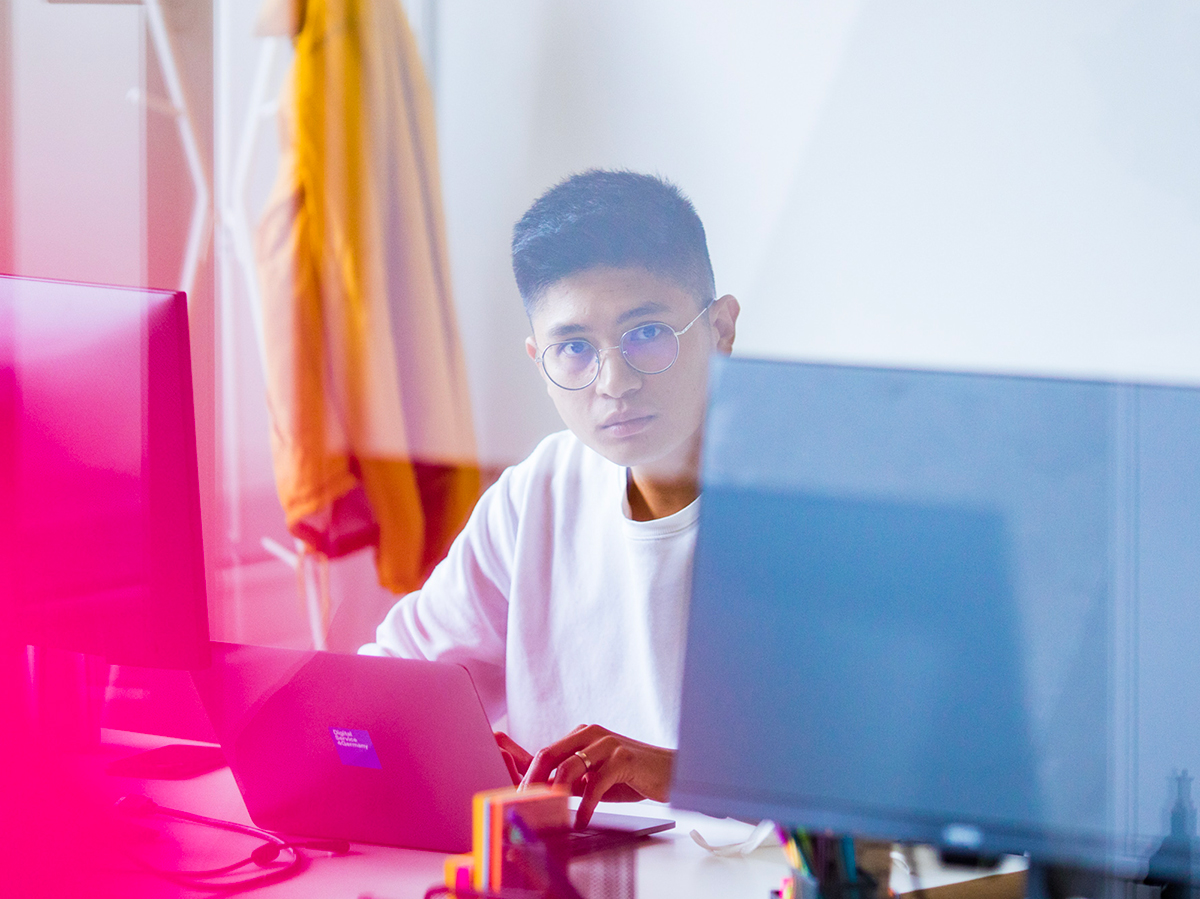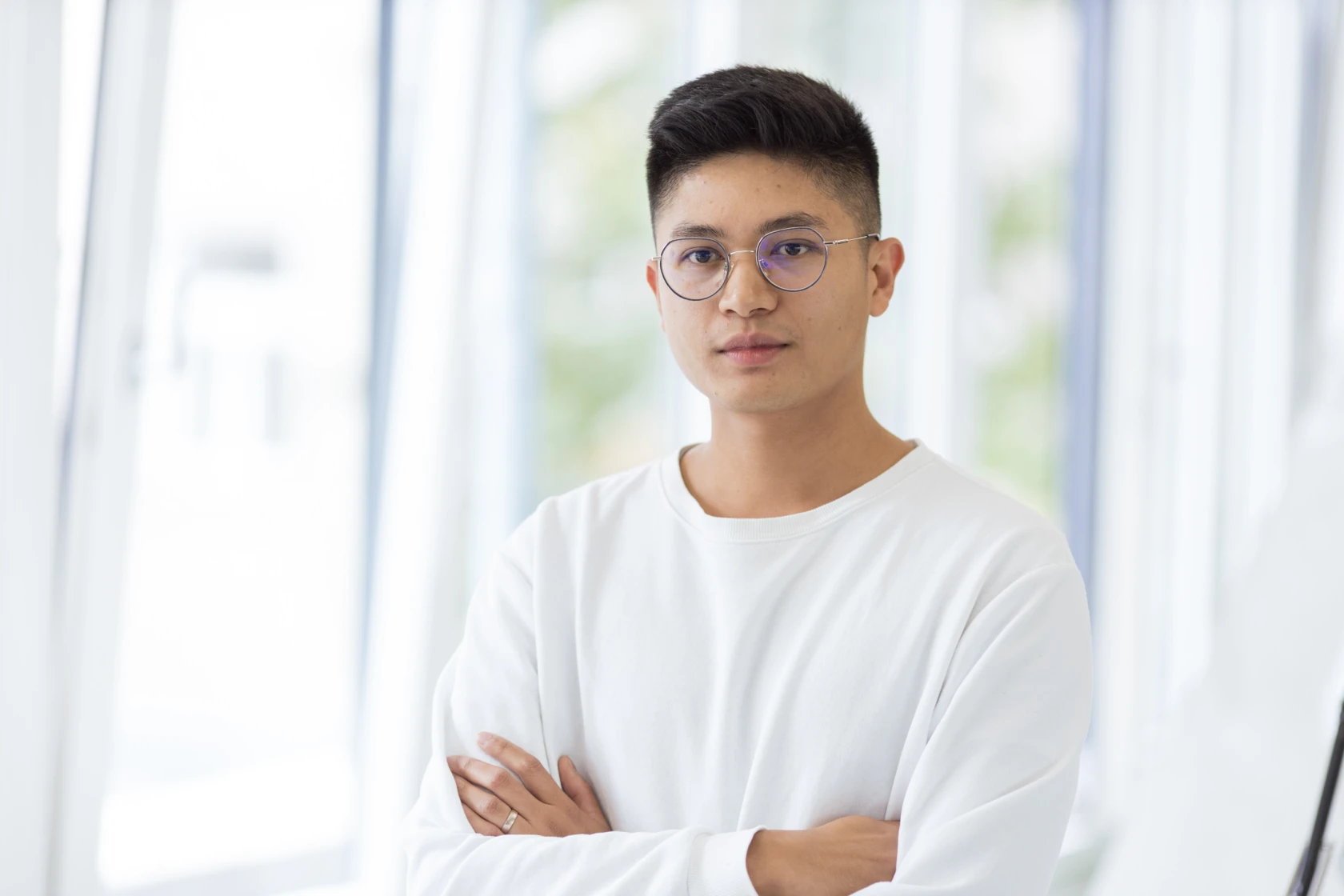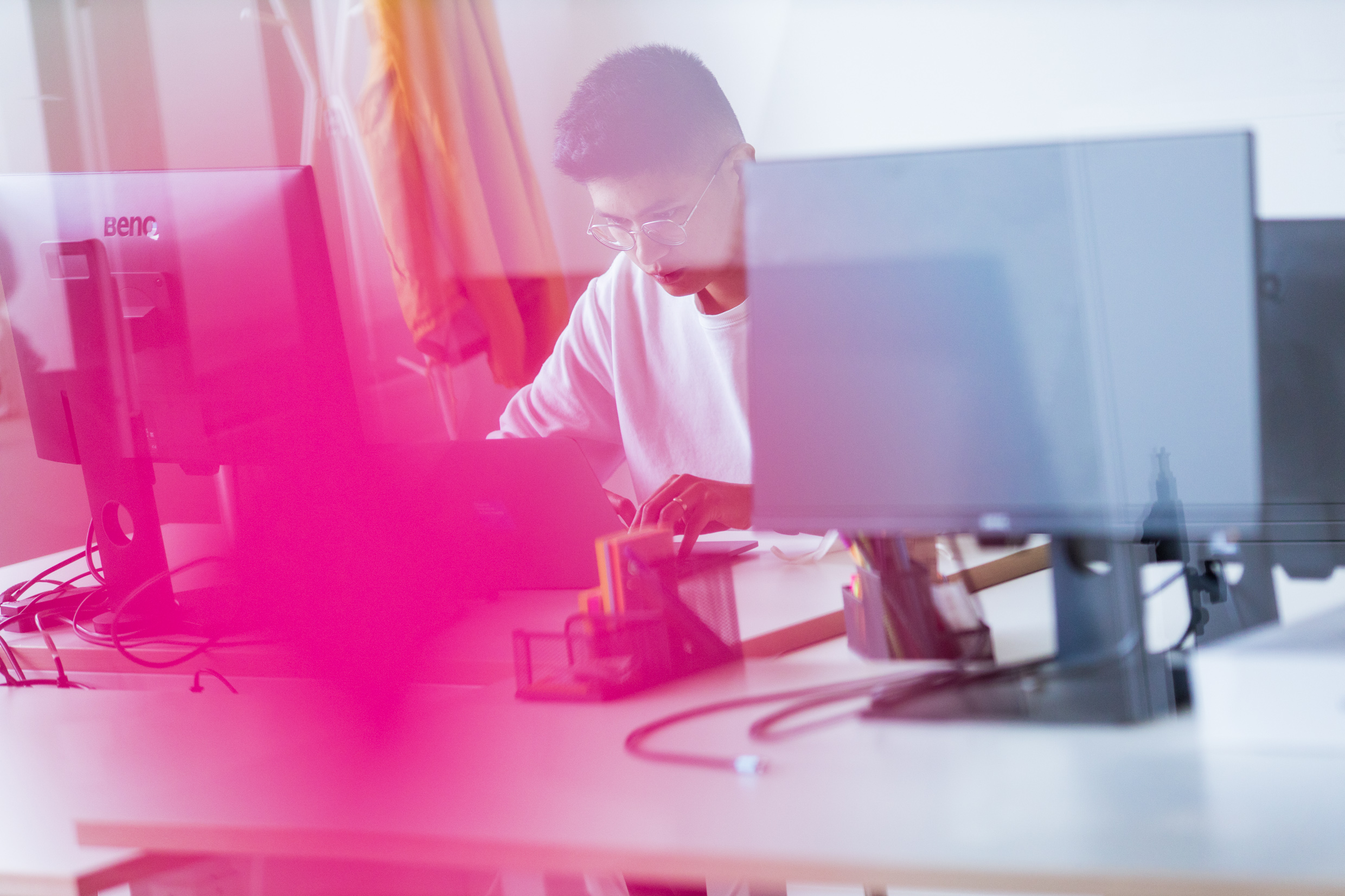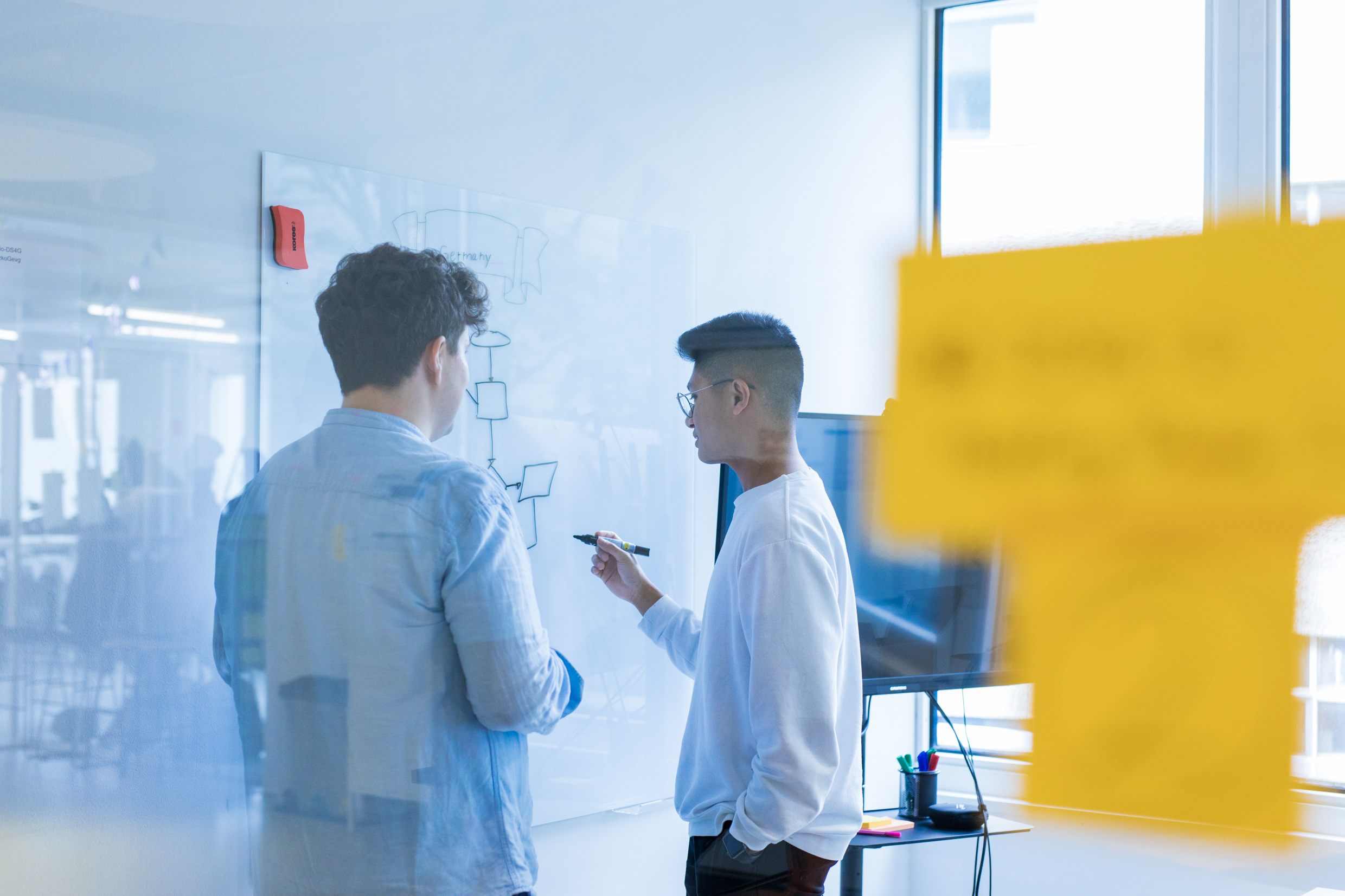
Interview with Designer AC
AC Almelor has been a UI/UX Designer at the DigitalService since April 2021. Before that, AC worked in different private companies in Germany, Malaysia, and the Philippines. AC is passionate about designing technology to be easier for people to interact with. If he is not on his work desk, he is fond of traveling and taking landscape and urban photos. At the age of 27, he has been to almost 50 countries on 4 continents.
“I see myself a bit as a design ambassador.”
You studied Information Technology. What’s the magic of that field?
During my highschool days, we had computer studies which I loved as much as the art classes.
I always saw myself going into these directions… It’s about the essence: digitalizing something. Finding a digital solution. I started with basic coding and was captivated. That field was emerging and developing quickly… Today it is all about creating digital solutions that work for everyone. There is always a user need or a problem behind every solution. So it’s a really goal-oriented process.
What brought you to Berlin?
In my first years, I worked in Manila and then I moved to Kuala Lumpur. I enjoy living and working in a different culture and also meeting new people. I didn’t target a specific country, I applied in the Middle East, Europe, South America… And then I got a job in Berlin.

Since April, you have been part of the DigitalService. What motivated you to become part of this growing team?
Most of my experiences so far have been in the private sector. As a UI/UX designer, my goal is to balance product and business goals. Here an integral part of crafting solutions is the user's needs. The mission and the values of the DigitalService made me join. In addition, it’s captivating to see that I am part of a professional, highly motivated team building solutions that have a social impact.
What is your role as an UI/UX designer?
As a UI/UX Designer, my primary goal is to understand the user's needs and to design solutions. No matter if it’s a digital product, a service, or an offline solution.
Before that, you were a UX designer at heycar and softgarden e-recruiting, among others. At PostCo in Kuala Lumpur, Malaysia, you led the UX/UI engagement. Tell us a bit more, please.
I led the UX/UI engagement in all aspects of the digital services process, from project commencement (user research, analysis, ideation, solution definition and design), right through to overseeing the building and quality of the end result. In addition, I implemented and improved the company's design process.
At Voyager Innovations you were the Lead Designer for an online e-commerce platform called TackThis. What exactly did you do?
I collaborated with designers, engineers, and product managers to define and implement innovative solutions for the product experience (B2C and B2B). Working with the graphic designers, I was assigned to help them to ensure that we have consistent branding throughout different channels.
What has been your experience at the DigitalService so far?
Since I joined here, I have really widened my expertise. It’s about a lot more than making things beautiful. Together with my colleagues, I can also contribute to successful processes and civic design solutions. I learned that I can be helpful in every step of the project.
Let’s dive a little deeper… In which ways can you be helpful as a designer?
To give context to a problem. We discuss the user needs and dive deep into exploration and understanding. You need to give your designer’s point of view according to the project timeline and learn to apply your skills in an agile, iterative process. We ask ourselves: what are the core tasks? We also convince our stakeholders and partners to try out new methods or ways of thinking and doing. I see myself a bit as a design ambassador. We inform the stakeholders and project partners and discuss with them: what do you want to achieve? And what is the best way to solve this project? Being a designer is a lot more than choosing between black or blue.
What design aspect are you really passionate about?
I’m really passionate about inclusive design. It means that everyone can use a product or a solution. No matter who you are, what equipment you are using, what knowledge, disability or cultural background you have. Technically: no barriers at all. The goal: no discrimination. Design that works for everyone.
What projects are you currently working on?
First, I joined the Agora team, a project together with the Bundesgesundheitsministerium (Federal Ministry of Health). The goal is to make it easier for the Gesundheitsämter (public health offices/departments) to collaborate and exchange information. For example: the Gesundheitsamt in Berlin wants to talk to the Gesundheitsamt in Hamburg. Right now there is not really a secure platform or solution for that. Agora solves this problem: finding contacts, sharing files… Since we deal with really confidential data, security is key. We want to enable secure video calls and messaging. And now I joined the UseID team.

How do you live user-centeredness at the DigitalService?
Having empathy for the user is a really important part. Walking in somebody else’s shoes. In most of the projects, we do shadowing. Going to the offices. Observing the processes to really see their perspective and understand their mindset. What do their daily life and work look like? What are their pain points? Sometimes it also matters which browser or device they are using, this technical stuff. We also have qualitative interviews. All this helps us understand who we are designing for.
What is it like to work with the administration and your team as a non-native speaker?
So far, I am the only one at DigitalService who is not yet fluent in German (note: there are more to come!). It also motivates me to improve my German. Fortunately, English is often the main language in my field. So working with my colleagues, we use English. After some weeks, I started to present something in German and I try to use the language more and more. But sometimes you get that mental block and you don’t get to say anything…
DigitalService on the one hand, administration on the other. How do you perceive the different working and corporate cultures?
I am getting to know my stakeholders and project partners in meetings. In general: the administration really trusts us in what we are doing. One difference: they use a lot of „Siezen“ while at DigitalService we are more for „Duzen“. Now in our project team, we arrived at a collective „Duzen“.
How important is a good team spirit?
It is important for me to have this positive attitude and optimistic mindset. The team spirit affects our way of working. Here I am pretty lucky and also impressed at the same time. Even though it can sometimes be a tight schedule we remain vibrant and cooperative under pressure. Sometimes we do fast yoga and stretching together. In our Monday coffee chat there is space for sharing interesting events, exhibitions, articles. We also go to Berlinale or a beer garden together as a team. I really like that.
What did you learn recently?
A new tool. We are using Figma as a collaborative interface design tool. It’s my first time using it and I learned about a lot of new interesting features.
Which trend do you find particularly exciting at the moment?
In terms of excitement: design system. In the UK Government Digital Service, they have their own design system. It’s really important for us as designers to see and understand: how do they use patterns or organize their elements? How do they synchronize governmental services and products? You can learn a lot from it.
What do you do when things are stuck and you have the feeling: nothing is moving?
It happens that there is a creative block. This feeling: there is nothing I can think of right now. It's part of the DNA of creativity. What to do then? Take a break. Take a walk. Walking can be the key. It actually often is for me.
Where do you find fresh inspiration?
Online: I usually check the big tech players like Airbnb, Spotify, etc. Offline: I enjoy strolling through museums and galleries. And commuting: on the train, I put my earphones on and listen to good music or podcasts. It regenerates my brain and refreshes my mind. And I love podcasts like Design for breakfast: they invite different designers to talk about their specific topic. For example, there is this new start-up that is specializing in accessibility called Get Stark. You get to see the reason and the values behind it and understand why they want to design that new solution. Really interesting.

What product would you like to develop?
I am a part of different Facebook groups that deal with the interests of foreigners and expats. I want to build an online appointment tool for the Ausländerbehörde (foreigners' registration office). The tool should be working for both sites: for foreigners or expats as well as clerks. Finding good solutions for frequent and important questions like my visa will expire in a few months, how do I solve that?
What else should we know about you?
I am married. My spouse is German from Schwarzwald (Black Forest).
Being married to a German, working in German: what is particular to working here?
What I really like: Germans are straightforward, right to the point. What they think is what they say. Not much sugar coating. In the Philippines, we usually apply the sandwich feedback: you need to say positive things first, then the negative part and then top it with something positive again. When I moved here, I first took the German approach personally until I understood: it’s cultural.
If the DigitalService was an animal, which one and why?
An eagle. Because an eagle has an overview, a broad perspective and a wider approach: it can see a lot of things at the same time. This is also important for the DigitalService. Because we need to widen our perspectives. And eagles fly really fast which fits our agile processes…
What makes you happy?
Traveling in nature makes me happy. I'm coming from the Philippines with all the nice beaches and islands, but I am a mountain person. I love forests, too. The surrounding area of Berlin is also very beautiful. Sometimes I go stargazing in Havelland where it is supposed to be one of the darkest spots in Germany.
Best advice?
Continue to learn. Technology is developing so fast. You need to adapt quickly in terms of changes and innovation.
How do you keep up to date?
I read curated design content: current trends, new solutions, business models, and start-ups. By reading blogs. And, also following the governmental Digital Services in other countries.

